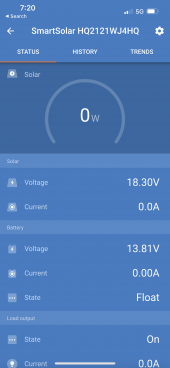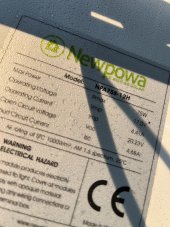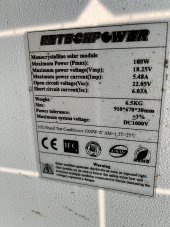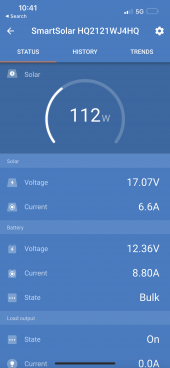saxon11
New Member
- Joined
- Sep 29, 2021
- Messages
- 58
New Victron 100W 20A MPPT controller. I hooked everything up, checked connections, looked good. Light is green on controller. I loaded up app, and show 0W coming from panels. Is this nromal or could be from battery being dead? confused, thank you









